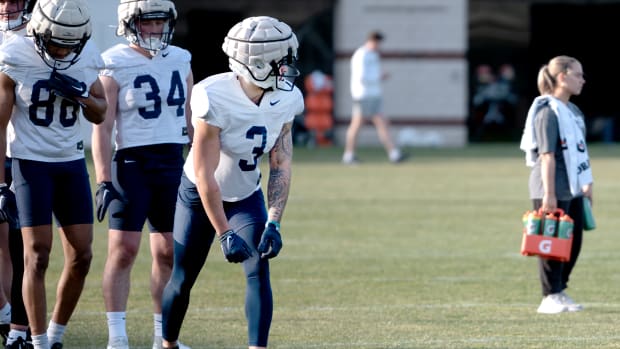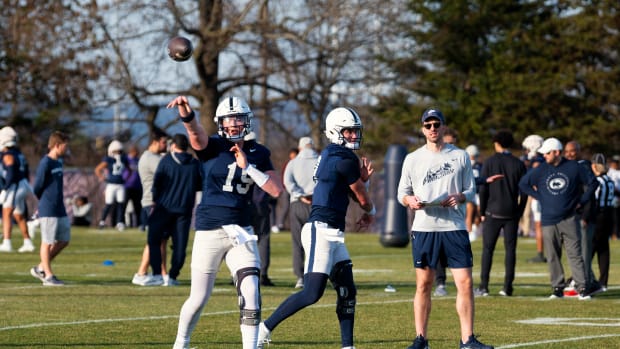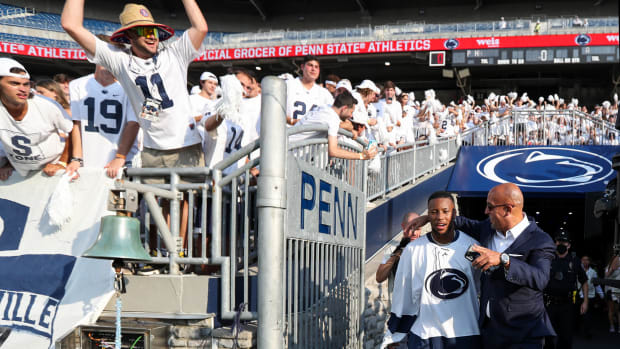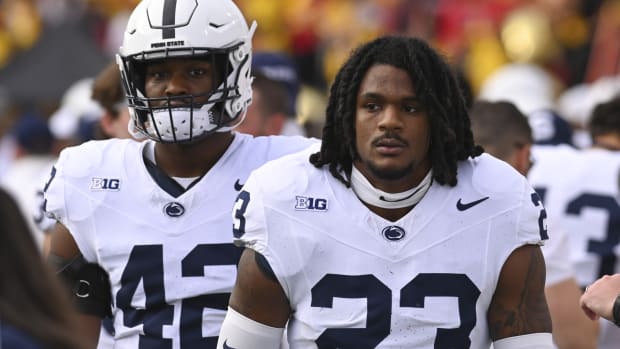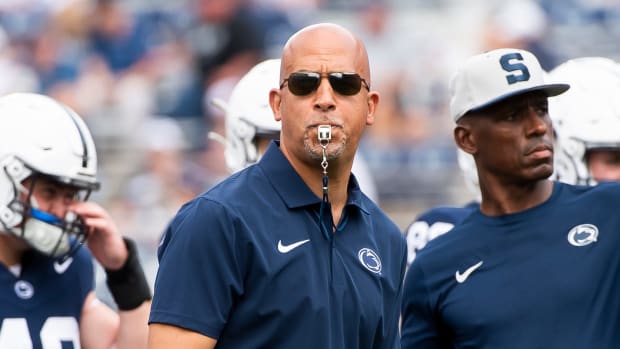Penn State AD: More Than Money to Conference 'Alliance'
A potential alliance between the Big Ten, ACC and Pac-12 would hinge on more than athletic revenue, as the conference's schools also share a "like-minded" sense regarding academics and research, Penn State Athletic Director Sandy Barbour said.
Asked about the alliance, first reported by The Athletic, Barbour said that expanded athletic revenue opportunities were "not the only reason" for such a proposal. About 40 percent of American Association of Universities members belong to the three conferences, Barbour said, including 13 Big Ten schools. AAU members earn a significant amount of federal funding for public health research and help to shape public policy in higher education, science and technology.
"Certainly money is important, but I'm not just talking about money," Barbour said during a weekend news conference. "What institutions, or what steps that we could take, would bring value to our conference? I do think that there are conferences out there that could bring value from a monetary standpoint, particularly speaking about our television contract and our television revenues, but also from this concept around like-minded institutions.
"The Big Ten really prides itself on being more than just an athletics conference: Our provosts get together, we share library resources, some other academic resources. ... I'm not trying to downplay the importance of value as it relates to upsizing our revenues. That absolutely, certainly is important. But that's not the only reason, and I think that there are some reasons around like-mindedness that would be very valuable to the conference."
Specifics of a conference alliance have not been announced yet. But, according to The Athletic story reported by Nicole Auerbach, college administrators pointed to "issues of governance" are central to the discussions.
With Texas and Oklahoma announcing plans to join the SEC, conferences are positioning themselves to make sure they don't cede too much authority over college athletics to the SEC. In addition, future media rights contracts could hinge on deals that make non-conference scheduling more attractive to broadcasting and streaming companies.
Barbour said that the Big Ten "feels like it's in a really good place" regarding conference membership. But she added that the conference has "been paying attention" to college athletics' shifting landscape.
"I think that this is a really interesting time, as it relates to what you're calling the ripple effect from Texas and Oklahoma," Barbour said. "I don't know that you've seen much ripple yet. I think this is different from some of the other expansion periods that we've experienced.
"I know the Big Ten feels like it's in a really good place, but having said that, whether it's this week or last week or sometime after the Oklahoma and Texas announcement, or it's the two months prior to that, it's something that ... we've certainly been paying attention to. And it's all about what brings value, and I'm not just talking about money."
Read more
Penn State has no plans to require vaccination proof from fans
Why the Lions expect to field a dominant offensive line this season
